How more data in HubSpot would’ve impressed my old boss
Before my job here at Clearbit, I lived, breathed, and cried marketing automation. This meant building lists, creating workflows, setting up landing pages, and sending lots of email — everything in HubSpot.
When I first heard about our HubSpot integration, I immediately thought about all the things I could’ve done if only I had more data. 100+ Clearbit-enriched data points automatically refreshed on every contact? I'll take 3!
I scribbled some notes on a piece of paper, earmarked for a grand reemergence at the next family reunion. But eventually, with great reluctance, I acknowledged dad’s side is generally less into SaaS integrations and more concerned with which stars can dance the best.
Their loss is your gain! Here are a few examples of what you can do with Clearbit for HubSpot.
Forms enrichment
Wanna talk to sales? Fill this out. Looking for a webinar recording? Just a few quick questions. Ready to download our latest report? First thing’s first — fill out these 10 annoying fields.
Over the years, a lot of my time’s been spent with one seemingly simple goal: get visitors to request a demo. And while I could change the copy of the preceding email, reconfigure the CTA, even work with the devs to optimize page layout, more times than not, one thing was Oprah-level untouchable: the form.
Job title, phone number, state in a 50-item dropdown — we needed it all! But with Clearbit's form shortening for HubSpot, I could’ve offered just enough fields for the best conversion rates while still collecting the key data required to qualify a handraise.
Lead scoring with just an email address
I’ve often heard of a legendary creature lurking deep in the backwoods of the internet, maybe in Maryland or an invite-only LinkedIn group. Cue unnerving music: the scored MQL.
Okay, I’ll admit, across a decadetime of marketing automation, I’ve probably sent one, even two bad leads to sales. After looking for ways to mess up less, I eventually found my way to HubSpot’s built-in lead scoring. It worked well on established contacts, especially as they generated more history. But with thousands of new signups each week, an additional set of 100+ attributes applied to every contact — from the very first interaction — could certainly help build a more relevant score, more quickly.
Here’s a simple before-and-after of what that might look like. On the left, a HubSpot-data-only scoring. On the right, I’d assign extra points for the contacts I know are most valuable thanks to new properties from Clearbit.
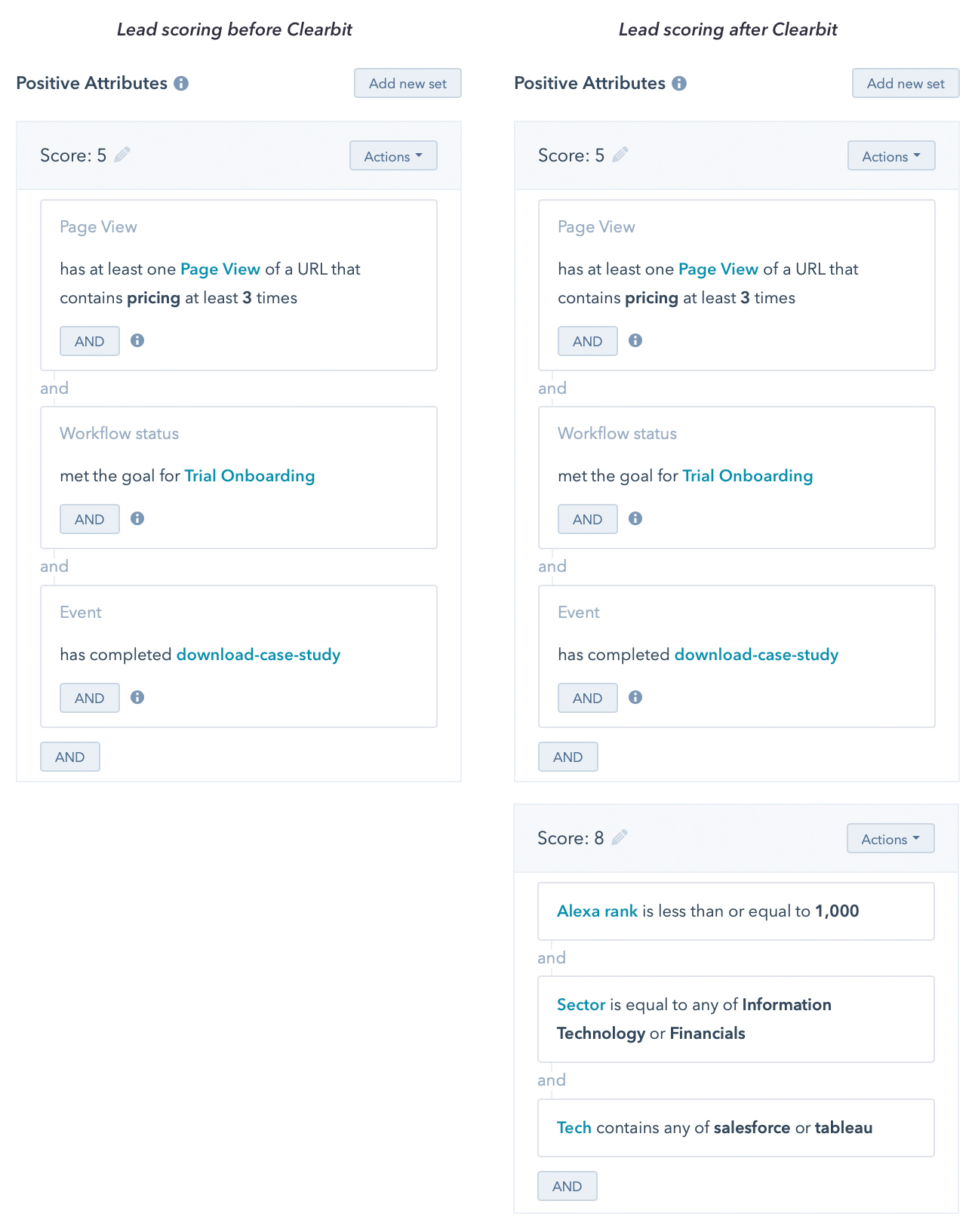
From here, it’s easy to use the expanded lead score within a workflow to set specific Salesforce tasks or campaigns or sync the score universally on your Salesforce contact records.
Persona-driven onboarding
While lead scoring is specific to each contact, you might also want to build broader programs around your most universal personas.
I’ve always been so impressed with the work of in-house research teams — surveying customers, conducting interviews, and figuring out how to best share their findings. When it comes to marketing, it’s usually easier to put their results into action after people show who they are through their interactions, like revisiting specific site pages, using certain product features, and otherwise creating more behavioral data.
But what about onboarding, from day one?
I’ve created elaborate email workflows, beautifully designed and carefully considered by product, marketing, sales, and leadership. The simplest of these delivered the same sequence to every signup, while the most complex branched based on a single prompt offered in the user’s signup flow — regularly skipped by folks just looking to try everything as quickly as possible.
If I could still log in to HubSpot for InVision, I’d start by creating a new contact property for persona. Then, I’d build a workflow with a few if/thens to set specific values based on key Clearbit-provided attributes.
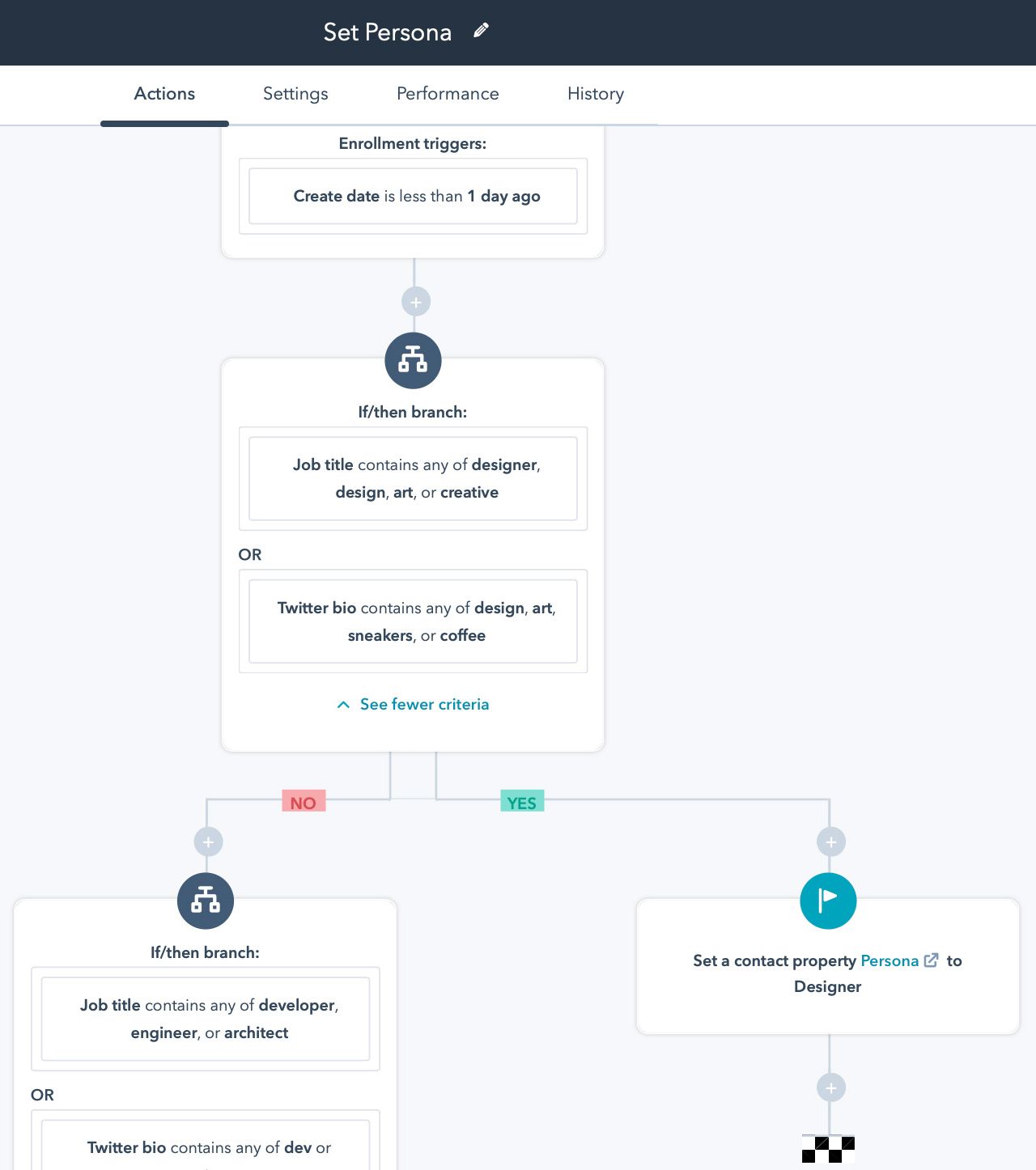
Back in the onboarding workflows, I could maintain my original criteria — that user-provided signup response — but could add my assigned persona with an OR condition to fill in the gaps.
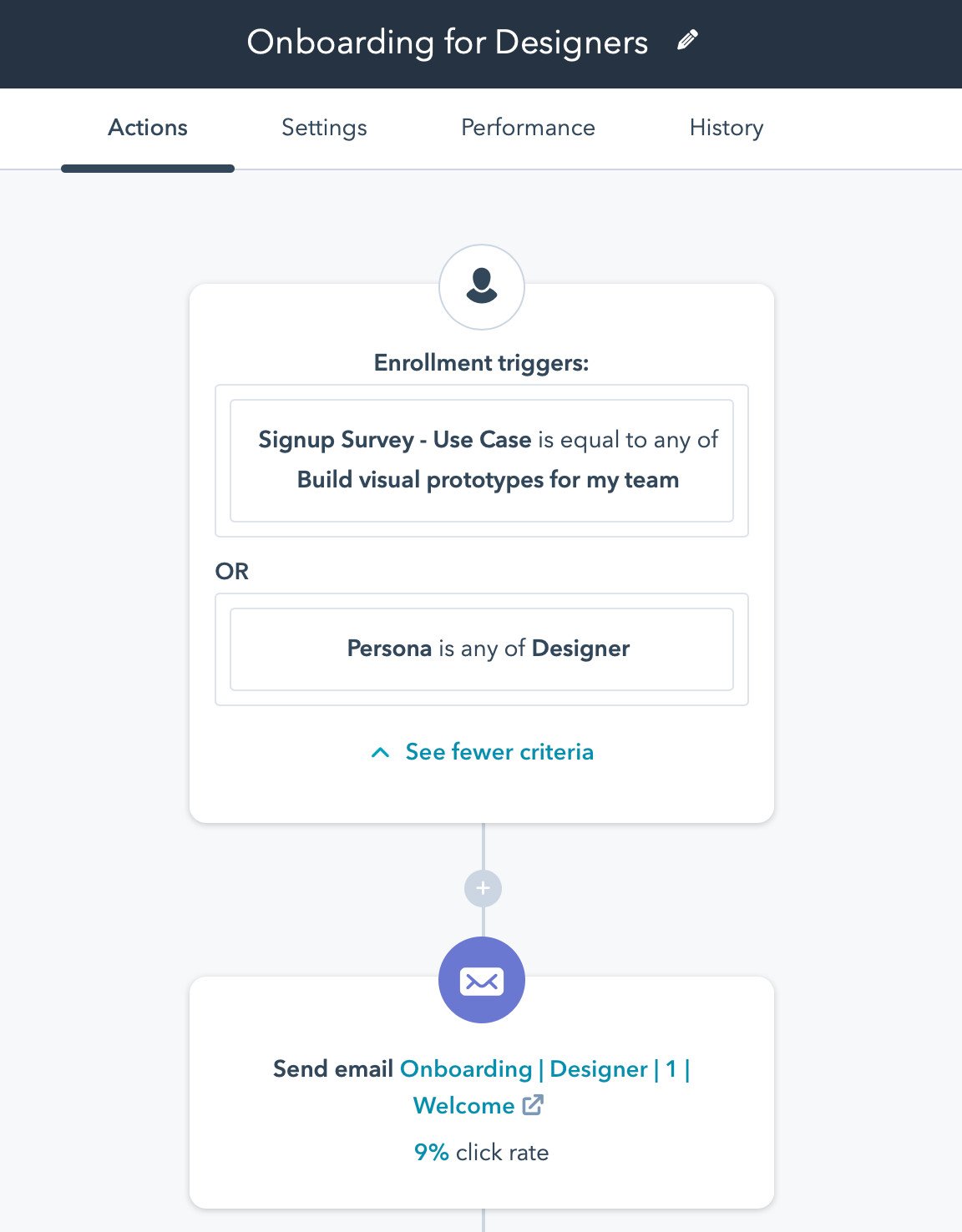
After onboarding, this new persona property could be used to set custom landing page CTAs or conditional text within existing emails. But even if you’re not ready for persona-specific messaging, build a workflow to set the property, then use its data to drill down performance in a custom report.
Expanded segmentation with more comprehensive data
It was the winter of 2012. Months past what I hoped was its peak, I still found myself declining wedding requests to perform "Gangnam Style." Back at work, Aarron Walter, then the Director of User Experience at Mailchimp, had a hunch: what if we could email a big collection of educational content to people who were staying inside to avoid the snow, when we knew they’d have some extra time to dig in?
It sounded like a great idea — and the eventual results proved it was — but our location data was limited. After identifying which cities had bad weather, we created manual lists of all the people in an imprecise radius. Unfortunately, our geolocation ended at billing info from existing customers and freemium users identified only after they logged in many times. And it was disappointing to leave out big portions of contacts when we knew there were more than a few dozen in Denver.
How easy is it to backfill location from Clearbit into HubSpot?
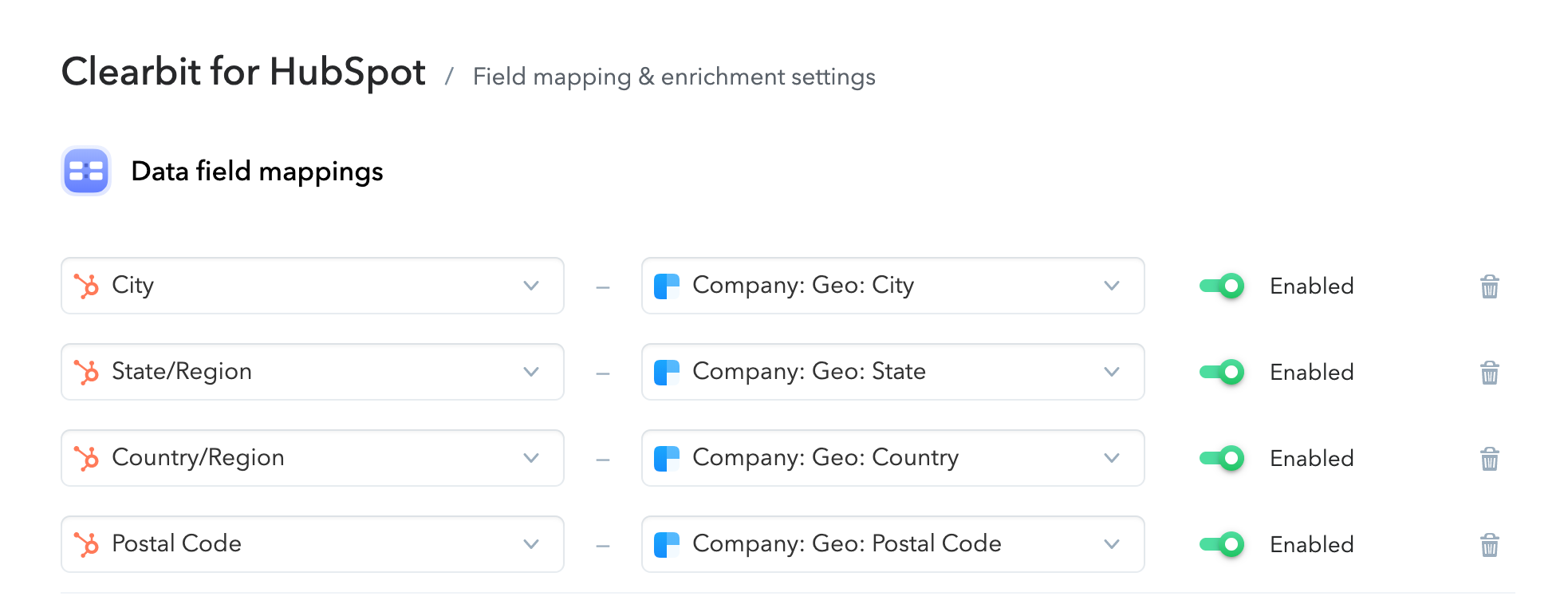
A more simple example: tasked with finding potential attendees for field marketing events, I was challenged to pair that same so-so location data with “only executives” or people with certain titles. The thing is, this info was only available for people who gave it to us or synced back from Salesforce for accounts deep into the sales cycle.
The first thing I would’ve done with access to Clearbit?

Smarter chatbots, less noise
A lot of bots start with a basic, qualifying question, casting the widest possible net and 👋 repeatedly until you’ve trained your eyes to avoid the lower right corner. But with the power of Clearbit, you can target a conversation with a specific prompt to a specific audience.
For example, you can set up HubSpot chat to only show up and interact with, say, your highest value target accounts — and never pop up for self-serve users.
This one’s super quick. Begin by creating an active list using your new Clearbit data.
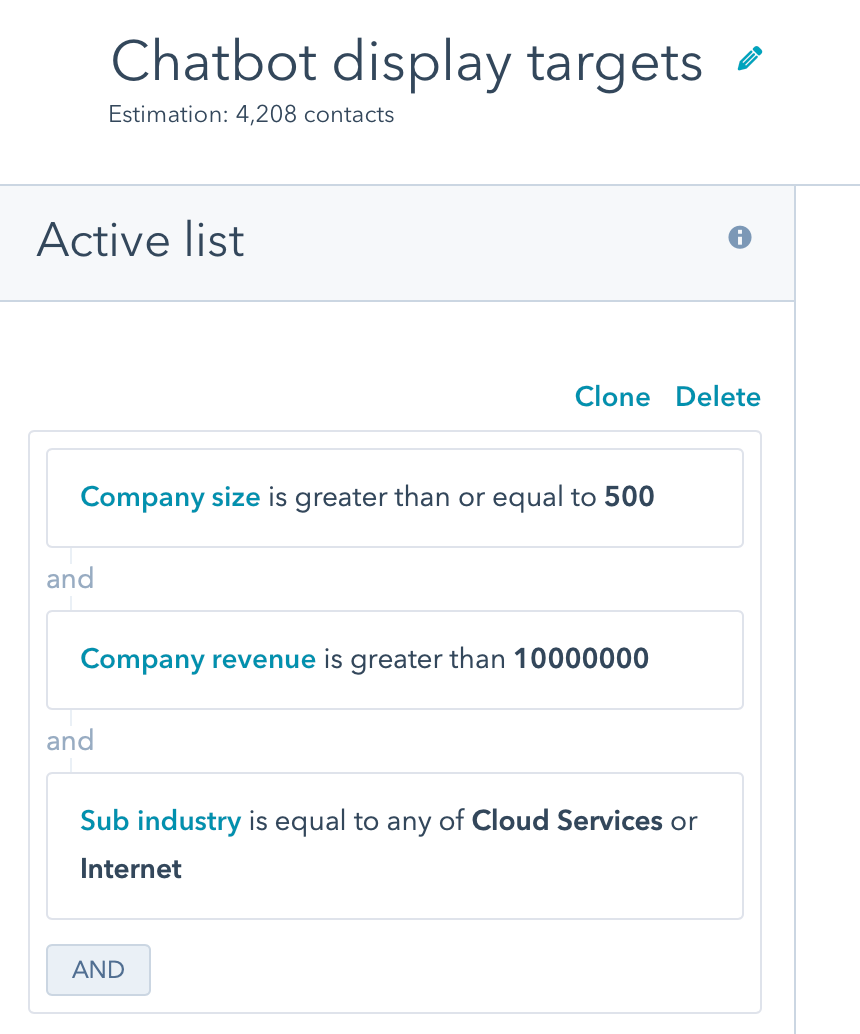
Set up your chatflow, then select your segmented list in its settings to display a chatbot only to them.

Thanks for reading my Inbound conference proposal
If you’ve connected HubSpot and Clearbit already, I hope these ideas inspire you to dig in and see what else might be possible. If you’re an existing HubSpot user who’s still wondering if this is for you, learn more about Clearbit for HubSpot.
With two of my favorites now interconnected, I can only compare this Clearbit/HubSpot Transformer to my delight when Ted Danson showed up on Frasier. On their own, each was a force. Together, they were invincible.

